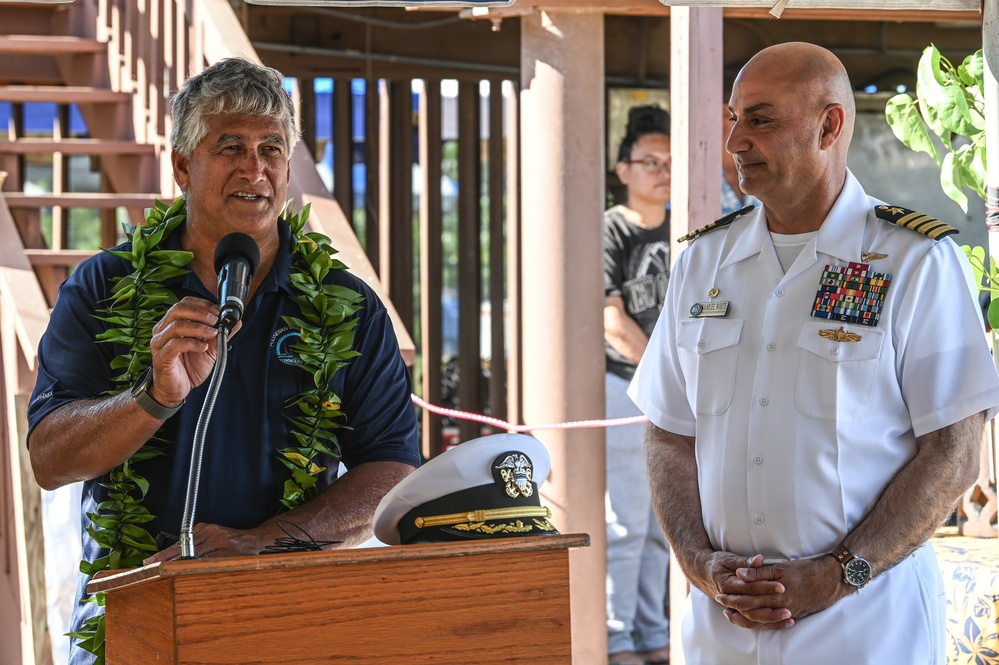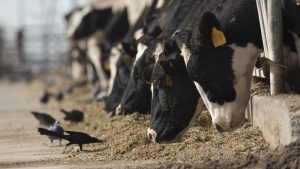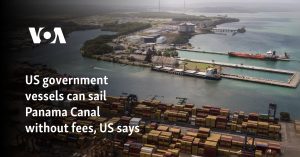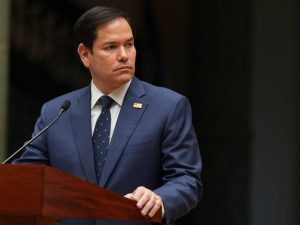The historic voyaging canoe Hōkūle’a has been described as a symbol of resilience, revival, cultural pride, environmental stewardship, peace, and hope. During the canoe’s recent visit to Pearl Harbor, she became a symbol of human connection.
“Out of all the voyages we’ve done, going around to all of the communities within Hawaii, this is the most meaningful because this is where we connect with the people of Hawaii in the canoe and just reaffirm that this canoe belongs to all of us. It’s not just something to look at from afar. It’s something to understand and embrace and we’re a part of it,” explained Captain Bruce Blankenfeld, a Pwo (master) navigator with the Polynesian Voyaging Society (PVS), which designed and built the 62-foot Hōkūle’a in the tradition of an ancient double-hulled voyaging canoe.
On Jan. 18, 2025, Hōkūle’a docked at Rainbow Bay Marina for a week of community engagements that included crew-hosted talks and tours for school children and community members. It was the second time the canoe visited Pearl Harbor. Her first trip to the area was in 2018, which PVS described as “the first time in hundreds of years that a deep-sea voyaging canoe has paid homage to the Hawaiian community of Puʻuloa.” Puʻuloa is the Hawaiian name for Pearl Harbor.
Sharing the story of Hōkūle’a with younger generations
For Blankenfeld, who first sailed on Hōkūle’a during training sails in 1977 and learned how to care for the canoe from his mentor Wally Froiseth, the return to Pearl Harbor was another opportunity to share the story of Hōkūle’a with younger generations, which he described as an enriching experience.
“Making sure they’re getting something meaningful that they can practically use as they go out to sea, and that it makes sense to them, and then they grow from there and make it their own. To me, that’s the most exciting part,” he said.
Blankenfeld studied non-instrument navigation under Nainoa Thompson, PVS president and Pwo navigator, and Pwo navigator Mau Piailug, who honored Blakenfeld as a master navigator in 2007.
Blankenfeld has voyaged tens of thousands of miles across Polynesia, the Pacific and the world as captain and navigator of Hōkūleʻa and sister canoe Hikianalia. He leads repairs and maintenance of both canoes and serves as Voyaging Director. He is also a PVS board member and works as a stevedore.
“Everybody knows Hōkūle’a. Just for people to learn about it, to go onboard, and look and touch and understand it more, I think, is just another link in this whole thing to learn more about our place in these islands and how we can all be a better version of ourselves,” he said.
Blankenfeld added that he is looking forward to the upcoming voyage in May when Hōkūle’a and Hikianalia circumnavigate the Pacific. The nearly four-year voyage is called Moananuiākea and will encompass 43,000 nautical miles and include visits to 36 countries and archipelagoes, nearly 100 indigenous territories, and 345 ports. A crew of 400 will man the voyage.
“Looking forward to going back to Tahiti and seeing old friends that we haven’t seen since 2017. Eight years ago was the last time we were there,” he said. “It’s a learning journey. We’re excited about that. We have so much that will come back to the islands and ripple across the Pacific through all of our other friends. We’re starting to get everyone to understand and appreciate each other more.”
Whether at port or at sea, Blankenfeld described how the Hōkūleʻa lives on in the hearts of Hawaiians and communities across the world: “When it’s sailing or when we leave here for one month and we’re gone for three years, they’re going to hear about it and learn about where the canoe is within over 10 million miles of ocean expanse. They’re going to be a part of it.”
The “Third Canoe”
Captain Mark “Keala” Kimura sailed on several legs of Hōkūleʻa’s Mālama Honua Worldwide Voyage (2013-2019) and served most recently as the captain of Hōkūleʻa’s escort boat, which accompanied Hōkūleʻa as she made her to Pearl Harbor. Kimura has captained the escort vessel on several other occasions and served as captain of Hikianalia.
Kimura works as a ship repair instructor at Honolulu Community College and is an avid fisherman and waterman.
With humility and a sense of humor, Kimura describes his navigation skills and credits his love of the ocean to his father, Raymond Moanikealaokamaileopanaewa Kimura, who took him out on a boat at a young age. “I am not a navigator. I call myself a navi-guesser,” he said. “I started running boats, my father’s 12-foot flat bottom boat, in Hawaii Kai the summer of my fifth grade so I’ve been on the water surfing, fishing, boating, and joined the Polynesian Voyaging Society in 2002, so that’s 23 years already.”
Kimura said the school visits and virtual check-ins during Hōkūleʻa voyages teach the world about ocean life and inspire the next generation of explorers.
“It helps them get excited about all kinds of things. Whether they know it or not, there’s a lot of math and science and everything else that happens in daily life on deck on the canoe,” he explained. “That in itself is something because we have what we call the ‘third canoe,’ which is a virtual connection between us and the community. They can follow us and watch us, watch where we are, they can track us, they can do that math, they can come and watch all of our live feeds, they can see how that’s going.
“We’re constantly doing science onboard,” he continued, “if we catch something, we dissect the innards of the fish to see what’s in it, any plastics or what they might be eating: weight, length, approximate where it was, all of that.”
Kimura said he hopes to be selected to crew Moananuiākea. “I would love to participate. It’s all by invitation. You put in the sweat and do your fair share of taking care of the canoe and everything else, have the right attitude — it’s like a job — you want to get promoted. You’ve got to have the right attitude and put in the work. You’ve got to take care of all the things that need to be done. Then you get invited. Then you get to go,” he explained.
Caring for Hōkūleʻa
Caring for the canoes of PVS is a labor of love for Benjamin T. Dumaran Jr., who works as the continuous training and development program instructor for Shop 38 at Pearl Harbor Naval Shipyard & Intermediate Facility (PHNSY & IMF). He has sailed aboard and used his carpentry skills to help repair and restoration all three PVS canoes: Hōkūleʻa, Hikianalia and Hawaiʻiloa.
Dumaran joined PHNSY & IMF in 2013 as a marine machinery mechanic. In 2023, he transferred to the training department where he instructs incoming apprentices and shop helpers to get them up to speed with the basic skills that mechanics need – whether it’s the physical mechanical skills or the paperwork including knowledge of rules and regulations that they must know when they repair of submarines and occasionally surface ships.
When he was about 16 years old, Dumaran learned about building and repairing Hawaiian canoes from his grandfather, Wallace Froiseth, who helped build Hōkūleʻa.
“I like to say I was unknowingly working on the Hōkūleʻa since I was a young adult,” Dumaran recalled. “I used to go to my grandfather’s house and help him lift the heavy pieces of wood and sand and glue and all of this carpentry work when, in reality, I was helping him build parts for the canoe.”
Dumaran got involved with the restoration of Hawaiʻiloa around 2010, assisting whenever and however he could. He said he was drawn to Hawai`iloa and was in awe of the determination, intensity and craftsmanship of the small, dedicated group heading the effort in the early 1990s to get Hawai`iloa seaworthy. Dumaran currently oversees volunteers at the Friends of Hōkūleʻa & Hawaiʻiloa and uses his shipyard experience to instruct the young volunteers who help repair and restore parts of Hawaiʻiloa that have been damaged by water and sun.
“The mission is to build up these young people so that they can help overcome issues we have in the world. We have climate issues, we have food supply issues, we have all kinds of issues that the world is dealing with and the main mission is to bring light to these issues and possible answers,” he said.
Dumaran said that the Hokule’a has mana, a Hawaiian term to describe the powerful spiritual force. He said a visit by seabirds during his last voyage captured some of that feeling. Other voyagers have shared similar stories about mana that involved the Hōkūleʻa, he added.
“I’ve been talking about how the canoe is a bridge and a catalyst for bringing people together. But the Hawaiian term, mana, comes to mind. It really has a special or innate spiritual or internal power that is just indescribable,” Dumaran said.
He further explained the definition of mana, which he sees as the key to what makes of Hōkūleʻa so captivating:
“In generic terms, mana can be described as a power or internal force. To me, mana is more than that. It’s that feeling someone gets when they, it could be anything. It could be a person. It could be a vessel in this case. A walking stick that your grandfather held for his whole life. It could be anything. Mana is the feeling you get when you’re touching it or you’re with that person and you just get that feeling like, hey there’s something special about this.”
Hōkūleʻa Fueled by Aloha
Rear Adm. Stephen Barnett, commander of Navy Region Hawaii, joined the crew aboard the Hōkūleʻa as she entered Rainbow Bay Marina, where she received a warm welcome from the military personnel and community members.
In his welcome remarks, Barnett praised PVS and the crew of Hōkūleʻa, highlighting their accomplishments over the last five decades. The canoe has sailed over 200,000 nautical miles across the Pacific and completed over 13 major voyages. “But she was fueled. She was fueled by self-discipline. She was fueled by preparation, courage, risk-taking. But the most important fuel is the fuel of aloha, which is what she has,” he said.
In May, PVS plans to resume the Moananuiākea Voyage when Hōkūleʻa and Hikianalia depart Hawaii and head to the major island groups of Polynesia. The voyage is described by PVS as “a global educational campaign that will amplify the vital importance of oceans and indigenous knowledge through port engagements, education and storytelling.” The voyage is expected to conclude in 2028.
| Date Taken: | 02.05.2025 |
| Date Posted: | 02.05.2025 21:09 |
| Story ID: | 490207 |
| Location: | JOINT BASE PEARL HARBOR-HICKAM, HAWAII, US |
| Web Views: | 9 |
| Downloads: | 0 |
PUBLIC DOMAIN

This work, Historic Hawaiian Voyaging Canoe Fosters Human Connections During Pearl Harbor Visit, by Kyler Hood, identified by DVIDS, must comply with the restrictions shown on https://www.dvidshub.net/about/copyright.








